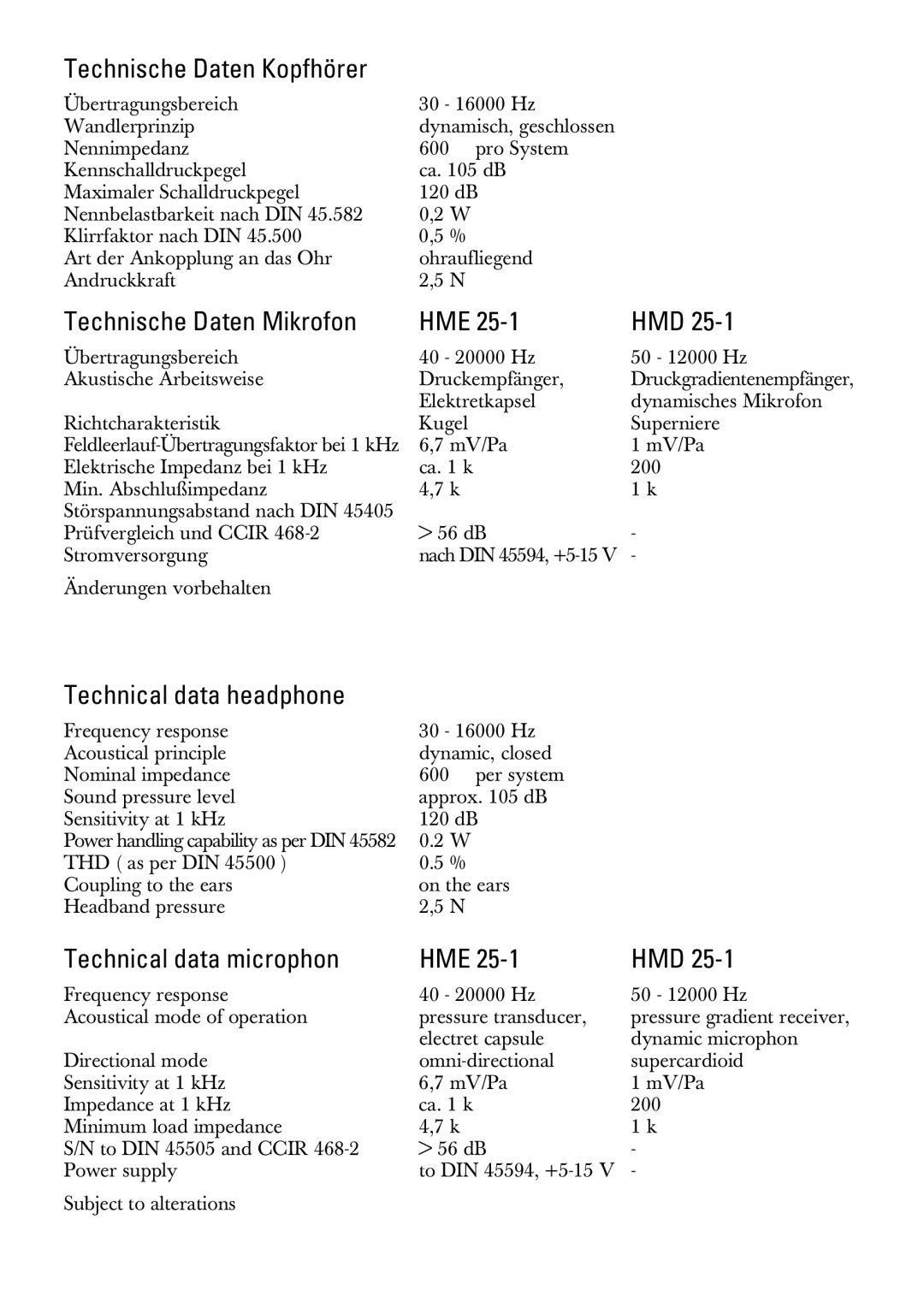HMD 25-1, HME 25-1 specifications
The Sennheiser HMD 25-1 and HME 25-1 are professional-grade headsets designed for audio monitoring and communication in challenging environments. These models are particularly popular among broadcasters, sound engineers, and event production teams due to their robust construction, high sound quality, and comfortable fit.One of the standout features of the HMD 25-1 is its excellent sound isolation. The closed-back design effectively blocks out ambient noise, allowing users to focus on audio without distractions. This is crucial in loud environments where maintaining audio clarity is essential. The headset also includes a dynamic microphone with a frequency response optimized for speech intelligibility, ensuring that communication is clear even in noisy settings.
The HME 25-1, on the other hand, is designed for broadcast communication. It retains similar sound isolation and microphone quality but incorporates features tailored for intercom systems. The headset is lightweight, making it comfortable for extended use. It features a flexible microphone boom that can be adjusted for optimal positioning, enhancing vocal clarity further.
Both models utilize high-quality dynamic transducers, which deliver a balanced sound with rich bass and clear mids and highs. The headphones can handle high sound pressure levels, making them durable and well-suited for various applications, including live events and studio work.
In terms of build quality, both the HMD 25-1 and HME 25-1 are constructed with durable materials that withstand the rigors of everyday use. The headband is adjustable, and the soft ear cushions provide comfort during long periods of wear. The replaceable parts add longevity to the product, ensuring that users can keep their headsets in excellent condition over time.
Another noteworthy characteristic is the compatibility of these headsets. Sennheiser offers various cables and connectors, allowing users to adapt the headsets for different devices and systems. This versatility makes the HMD 25-1 and HME 25-1 suitable for a range of professional audio applications.
In summary, the Sennheiser HMD 25-1 and HME 25-1 headsets stand out for their sound quality, robustness, and comfort. They are designed to meet the demands of professionals who require reliable audio equipment for monitoring and communication, making them a trusted choice in the broadcasting and audio production industries. Whether for on-the-go reporters or stationary sound engineers, these headsets deliver exceptional performance in various environments.
